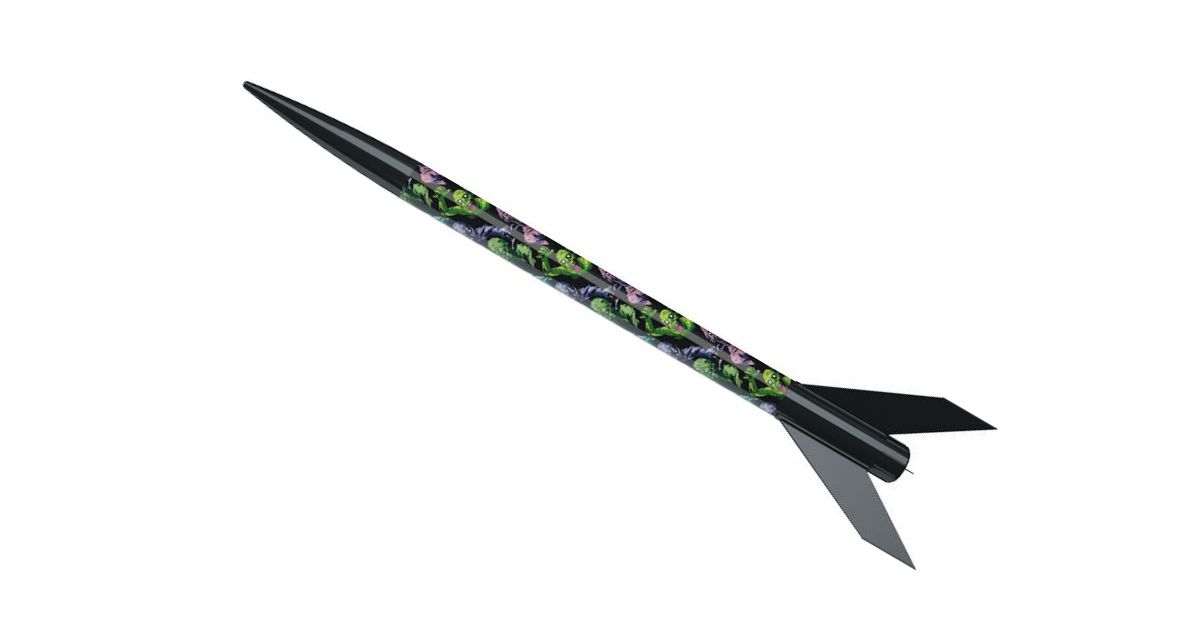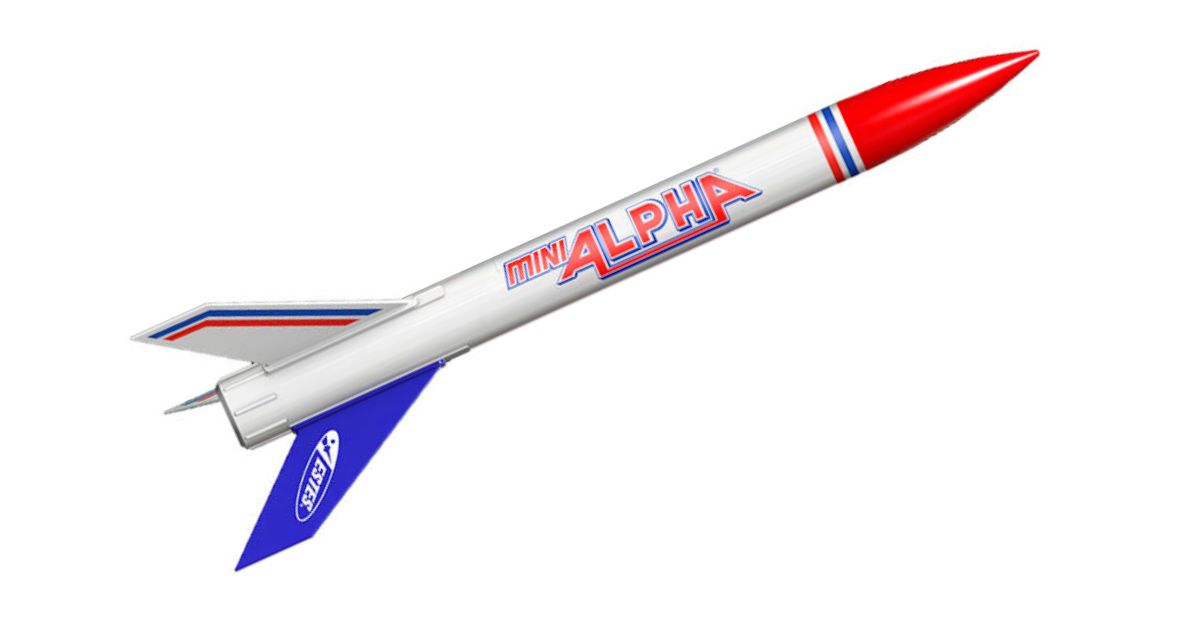Are you getting ready to launch a model rocket? Make sure your launch goes off without a hitch by learning about one of the most important components of model rockets: the fins. In this guide, we will explore the best fin shapes for model rockets so you can choose one based on your goals, skill level, and flight conditions.
Whether you’re planning a classroom demonstration, summer camp activity, or weekend launch with fellow enthusiasts, understanding fin aerodynamics will transform your rocket-building experience.
Why Fin Shape Matters for Rocket Stability
During flight, the fins serve as your rocket’s primary stability system. They work by creating resistance when the rocket tilts off its flight path, automatically correcting the trajectory and keeping your rocket flying straight.
The shape you choose affects three key performance factors:
- Stability: determines how quickly and effectively your fins correct flight deviations
- Drag: influences how high your rocket will climb and how much speed it maintains
- Manufacturing complexity: impacts how easily you can cut, sand, and attach your fins to the rocket body
Different fin shapes excel in various areas. Some prioritize maximum stability for beginners, while others optimize for minimal drag to achieve peak altitude. Understanding these trade-offs helps you select the ideal design for your project goals.

Trapezoidal Fins
With their excellent stability and manageable construction requirements, trapezoidal fins are found in most model rocket starter sets. These fins feature a rectangular root that tapers to a smaller tip, creating an efficient balance between performance and practicality.
You’ll find trapezoidal fins easy to cut from balsa wood or plywood using basic tools. The shape provides a generous surface area near the rocket body where stability forces are most effective, while the tapered tip reduces unnecessary drag. This design works exceptionally well for educational settings where you need predictable, stable flights every time.
Since they deliver reliable results across different skill levels and building techniques, most successful classroom rocket projects and camp activities use trapezoidal fins. You can sand the edges round for improved airflow or leave them sharp for easier construction without significantly impacting flight performance.
Elliptical Fins
In model rocketry, elliptical fins represent the pinnacle of aerodynamic efficiency. Their curved shape minimizes induced drag while maintaining excellent stability, making them the preferred choice for altitude competition rockets and advanced projects.
The challenge with elliptical fins lies in their construction complexity. You’ll need to carefully trace and cut smooth curves, then sand the edges to maintain the proper airfoil shape. This process requires more time, skill, and attention to detail than straight-edged alternatives.
However, the performance benefits justify the extra effort for serious enthusiasts. Elliptical fins produce less drag than any other common fin shape while still providing adequate stability for most rockets. You’ll notice improved altitude performance and more efficient flights, especially with larger rockets that use high-power motors.
Clipped Delta Fins
Clipped delta fins offer an excellent middle ground between construction simplicity and aerodynamic performance. These fins start with a triangular delta shape but remove the sharp tip, creating a straight trailing edge that’s easier to build and more durable in flight.
You’ll appreciate how clipped delta fins combine the stability benefits of large surface area with reduced drag compared to full triangular shapes. The clipped tip eliminates the fragile point that often breaks during handling or hard landings, making these fins more practical for repeated use in educational settings.
Construction involves cutting two straight edges and one angled edge, making the process straightforward even for younger builders. The result is a stable and adaptable fin that works well with many different project requirements.
The optimal clipped delta design features a sweep angle between 45 and 60 degrees, with the clipped section removing about 15 to 20 percent of the full triangle’s tip. These proportions significantly improve durability and ease of construction, while maintaining most of the aerodynamic benefits.
Rectangular Fins
Rectangular fins are the most basic approach to rocket stability. You can cut them quickly with minimal tools and attach them easily to your rocket body. Just keep in mind that this simplicity comes with significant performance limitations that make them suitable only for specific applications.
The main advantage of rectangular fins is their construction speed and material efficiency. You’ll waste very little balsa wood, and the cutting process requires only straight lines. This makes rectangular fins ideal for large group projects where time and budget constraints prioritize quantity over optimal performance.
Unfortunately, rectangular fins create more drag than necessary, and their excessive stability may reduce altitude performance. The sharp corners and large surface area generate turbulence that robs your rocket of speed and height. Most experienced builders avoid this shape except for aesthetic or practical requirements.
If you choose rectangular fins, keep them relatively small to minimize drag penalties. A good rule is making the fin length equal to two or three rocket diameters, with the width measuring about 1.5 diameters. This size provides adequate stability without excessive drag for lightweight rockets using small motors.

Choosing the Right Fin Shape
Your project goals should drive your fin shape selection. For instance, educational demonstrations and group activities benefit most from trapezoidal fins because they provide predictable flights with manageable construction requirements
On the other hand, competition rockets and altitude attempts call for elliptical fins despite their construction complexity. The drag reduction often provides the extra performance needed for record attempts or winning flights. If you’re an experienced builder who enjoys the challenge of precise construction work, you’ll enjoy working with elliptical fins.
When making your selection, consider your available tools and time constraints. Trapezoidal and clipped delta fins work well with basic hobby knives and sanders, while elliptical fins benefit from templates, band saws, and careful hand-finishing techniques.
Also, make sure to factor in the flight environment. Windy conditions favor fins with greater stability, pushing you toward trapezoidal or rectangular designs. Conversely, calm weather allows you to optimize for minimum drag with elliptical or clipped delta shapes.
Prepare For Blast Off
Selecting the best fin shape for your model rocket will transform your rocket into a precise flying machine. Are you ready to put your newfound knowledge into action? Stock up on all your rocket needs at Midwest Model Supply today! Whether you’re a beginning rocketeer or a seasoned expert, we have exactly what you need for a flawless launch. The perfect flight starts with smart design choices, and now you have the knowledge to make them confidently.


